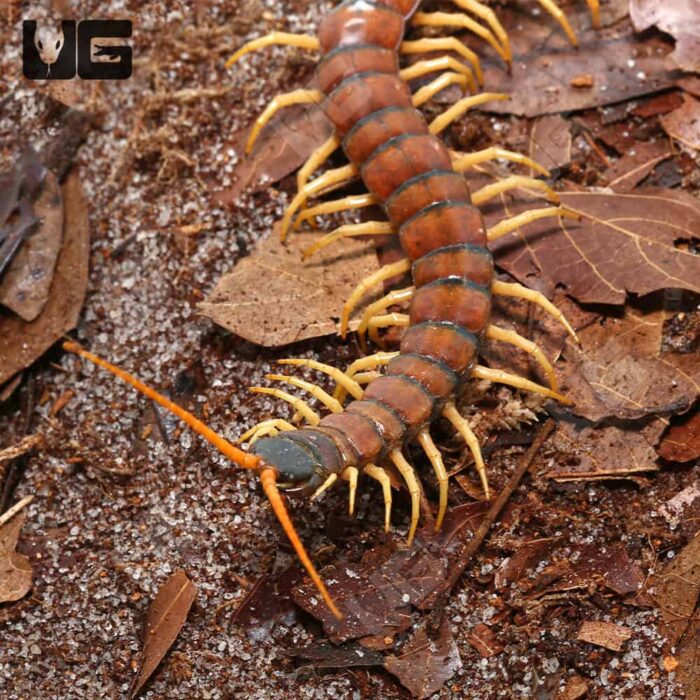Centipedes vs. Millipedes: Understanding Their Unique Roles in Nature
The natural world is teeming with fascinating creatures, each playing a unique role in the ecosystem. Centipedes and millipedes stand out due to their many legs and intriguing lifestyles. While their appearances might seem similar at first glance, these arthropods differ significantly in anatomy, behaviour, and ecological roles. Let’s dive into the world of centipedes and millipedes to understand their differences and appreciate their contributions to nature.
Anatomy: A Tale of Legs and Segments
Centipedes, whose name means “hundred feet,” are known for their elongated, flattened bodies. Despite their name, most centipedes have between 15 and 177 pairs of legs, with one pair per body segment. Their long, sensitive antennae help them navigate their environment, and their colouration ranges from brown to reddish or yellowish hues.
In contrast, millipedes have a more cylindrical or slightly flattened body. Their name, translating to “thousand feet,” is also a misnomer—most millipedes have between 30 and 400 legs, with two pairs of legs per body segment. Generally darker in colour, such as black or brown, some species of millipedes showcase vibrant hues. Their shorter antennae are less sensitive compared to centipedes.
Behavior: Predator vs. Decomposer
The behavioural differences between centipedes and millipedes are stark. Centipedes are fast-moving predators that rely on speed and venomous claws located behind their heads to subdue prey. They feed on insects and spiders and are primarily nocturnal and elusive.
On the other hand, millipedes are slow-moving detritivores that feed on decaying organic matter like leaves and wood. Their deliberate, wave-like movement highlights their non-aggressive nature. When threatened, millipedes curl into a tight spiral to protect their soft undersides, and some species release a foul-smelling chemical as a defence mechanism.
Habitat Preferences
Both centipedes and millipedes thrive in moist environments to prevent desiccation. They are commonly found under rocks, logs, leaf litter, and soil. However, their specific habitat preferences differ:
- Centipedes prefer hunting grounds such as soil or bark where prey is abundant.
- Millipedes favour areas rich in organic material to support their decomposing diet.
Ecological Contributions
The roles of centipedes and millipedes in ecosystems reflect their differing lifestyles:
- Centipedes act as predators, helping control populations of smaller arthropods like insects and spiders. By doing so, they contribute to maintaining ecological balance.
- Millipedes are vital decomposers. They break down organic matter, enriching the soil and facilitating nutrient cycling. Their contributions are essential for healthy forests and gardens.
Evolutionary Histories
Centipedes belong to the class Chilopoda, believed to have evolved around 430 million years ago. Their adaptations, such as venomous claws and speed, allowed them to become efficient predators. Millipedes, part of the class Diplopoda, have an even older lineage, dating back over 400 million years. Fossil evidence indicates that ancient millipedes were among the first arthropods to colonise land, playing a pioneering role in terrestrial ecosystems.
Reproductive Strategies
Centipedes and millipedes also differ in their reproductive strategies. Centipedes typically lay eggs in hidden, moist environments. Some species exhibit parental care, guarding their eggs and young until they are self-sufficient. This behaviour reflects their investment in offspring survival.
Millipedes, in contrast, focus on quantity over care. They produce large numbers of eggs, often burying them in soil or leaf litter. This strategy ensures the continuation of their populations as essential decomposers.
Interactions with Humans
The relationship between humans and these arthropods varies:
- Centipedes can pose a minor threat due to their venomous claws. While their bites are not typically dangerous, they may cause discomfort or allergic reactions. Nonetheless, centipedes are often viewed as beneficial because they control pest populations.
- Millipedes are harmless to humans but can become nuisances when they invade homes or gardens in search of moisture. Their ecological benefits, however, far outweigh these inconveniences.
Cultural Perceptions
Centipedes and millipedes hold different places in human culture. Centipedes are often associated with fear or superstition due to their predatory nature and venomous capabilities. Conversely, millipedes are typically seen as harmless and may symbolise patience or resilience in folklore. These cultural views reflect humanity’s tendency to assign symbolic meanings based on animal behaviour.
Nature’s Balance
The coexistence of centipedes and millipedes in shared habitats demonstrates nature’s balance. Centipedes control populations of herbivorous insects that could damage plants, while millipedes recycle organic matter to enrich the soil. Together, they contribute to ecosystem stability and health, emphasising the importance of biodiversity.
Conclusion
Centipedes and millipedes exemplify the diversity of arthropods through their distinct characteristics and ecological contributions. Whether as predators or decomposers, their roles are essential for maintaining balance in nature. By understanding their differences, we can appreciate their unique contributions and foster a greater respect for these fascinating creatures. From the centipede’s speed to the millipede’s methodical movements, these many-legged marvels remind us of the intricate web of life that sustains our planet.

